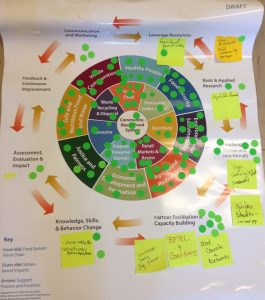By: Maureen McNamara Best, Local Environmental Agriculture Project (LEAP) (www.leapforlocalfood.org)
We all eat. So that means we all understand, value, and think about food, agriculture, and food producers, right?
 As a society, our school systems and holidays still nod to our agrarian past. But for most us, our lives are not structured around soil preparation, planting time, harvest schedules, or feeding livestock. And, if at all, we only spend a couple minutes a day thinking about where our food comes—and that time is probably focused on the logistics of purchasing food from a retailer and/or consuming a prepared meal. In a complex, industrialized society— we specialize. And in that sense, the food industry is no different. But at what cost? Read more
As a society, our school systems and holidays still nod to our agrarian past. But for most us, our lives are not structured around soil preparation, planting time, harvest schedules, or feeding livestock. And, if at all, we only spend a couple minutes a day thinking about where our food comes—and that time is probably focused on the logistics of purchasing food from a retailer and/or consuming a prepared meal. In a complex, industrialized society— we specialize. And in that sense, the food industry is no different. But at what cost? Read more





